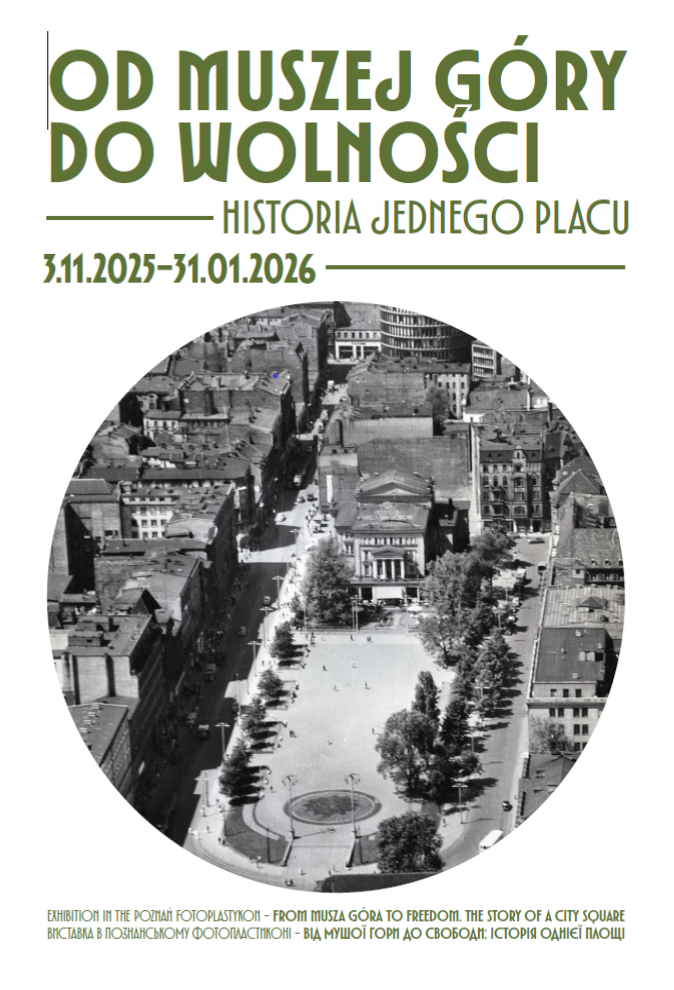From Musza Góra to Freedom. The Story of a City Square

Its scale speaks to Poznań's bold and evolving urban development aspirations, being larger than the Old Market Square, yet still dwarfed by the monumental Imperial Forum (now Plac Mickiewicza and the park in front of the Opera house). While the Market Square served as Poznań's administrative and commercial hub, and the Imperial Forum was intended as the centrepiece of the government quarter, Plac Wolności was designed to host ceremonies and bestow prestige.
The square was laid out in the late 18th century on the levelled Musza Góra hill to a design by the Prussian urban planner David Gilly. To the east, it was flanked by the remains of the medieval city walls, and to the north-west by the former suburb of Kundorf (now the area around ul. Libelta). Initially, it was surrounded by single-storey administrative and military buildings, as well as public service facilities. Its ceremonial nature was defined by the German Teatr Miejski (Municipal Theatre), built in the square itself between 1802 and 1804, as well as by statues celebrating Prussian heroes, and by carefully arranged green spaces. Over the past two centuries, the square has seen countless architectural and urban transformations. The surrounding buildings, including the theatre, have been upgraded multiple times, only to be demolished to make way for new construction. Monuments were built and later torn down, green spaces set up and cleared, fountains installed and subsequently removed. The square's purpose evolved continuously from public and military use, to becoming the site of hotels, commercial and banking activities, and later recreational and entertainment functions. During the interwar period, the square - locally nicknamed Plajta (meaning "bankruptcy" in Polish), became the heart of social life, a popular spot for taking strolls and meeting friends. After the war, it earned the title of "victory square", hosting Poland's first manifestation since the Battle of Poznań. Throughout the communist era and continuing to the present day, the square has remained a central venue for cultural, sporting, and official civic and state events, fulfilling the ceremonial purpose for which it was originally designed over two centuries earlier.
The images featured in the exhibition have been provided courtesy of the Poznań University Library, the Poznań Office of the City Conservator of Historic Monuments, the Poznań Development Foundation, the Town Hall Museum of Poznań, the Społem Consumer Cooperative of Poznań, the Museum of Karol Marcinkowski University of Medical Sciences, Wydawnictwo Miejskie Posnania, and various private collections.
Danuta Książkiewicz-Bartkowiak
translation: Krzysztof Kotkowski
"From Musza Góra to Freedom. The Story of a City Square" - an exhibition in the Poznań Photoplasticon (Fotoplastykon Poznański)
Centrum Informacji Kulturalnej (Cultural Information Centre), ul. F. Ratajczaka 44
3.11. - 31.01.2026; opening hours: Monday - Friday 10 am - 6 pm, Saturday 10 am - 5 pm, Sunday and holidays closed, last admission 1 hour before closing time
tickets: regular admission - 6 pln, reduced admission - 3 pln, family tickets - 12 pln, group tickets (groups of 10 or more) - 25 pln
© Wydawnictwo Miejskie Posnania 2025
See more

From One Celebration to Another

Christmas Markets and Fairs with Attractions

Truly Festive Vibes
